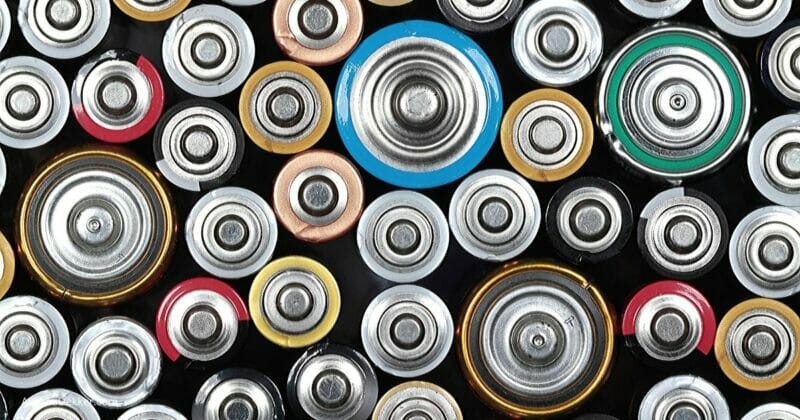Have your favorite gadgets or kids’ toys stopped working? Don’t toss them out just yet! Battery corrosion is a common culprit behind malfunctioning electronics, but the good news is, it’s often simple to fix. You might be surprised to learn that cleaning battery corrosion is an easy task you can tackle at home with just a few household items.
This guide will walk you through a straightforward, step-by-step process to effectively clean battery corrosion from your devices, bringing them back to life and saving you money. Whether it’s a remote control, a child’s toy, or any other battery-operated device, understanding how to remove battery corrosion can be a valuable skill.
 Step-by-step guide on how to clean battery corrosion from electronics and toys using baking soda and household items
Step-by-step guide on how to clean battery corrosion from electronics and toys using baking soda and household items
Materials You’ll Need
Before you begin, gather these simple materials. You likely already have them around your house:
- Paper towels or a cleaning rag: For wiping and cleaning.
- Cotton swabs: Ideal for reaching tight spaces and applying cleaning paste precisely.
- Baking soda: The key ingredient to neutralize and remove corrosion.
- Water: To mix with baking soda and create a cleaning paste.
Step-by-Step Guide to Cleaning Battery Corrosion
Follow these six easy steps to safely and effectively clean battery corrosion from your devices:
STEP 1: Safety First & Battery Removal
The first and most crucial step is to safely remove the corroded batteries from your device. In most cases of battery corrosion, the old batteries will be spent and need to be discarded properly. Always handle corroded batteries with care and consider wearing gloves to protect your skin. Dispose of the old batteries according to your local regulations for battery disposal.
STEP 2: Initial Cleaning – Removing Loose Debris
Examine the battery compartment for any loose chunks of corrosion. If visible, gently try to remove them. You can use a dry paper towel to wipe away these larger pieces, or carefully blow them out with compressed air if available. This initial cleaning makes the next steps more effective.
STEP 3: Prepare the Cleaning Solution (Baking Soda Paste)
Now, it’s time to create the cleaning solution. Mix a small amount of baking soda with a few drops of water in a small bowl or container. You only need about a teaspoon of baking soda and just enough water to form a thick paste. The consistency should be similar to toothpaste. A cotton swab can be useful for mixing this small amount.
STEP 4: Apply and Clean the Corrosion
Using a cotton swab, apply a small amount of the baking soda paste to the corroded areas inside the battery compartment. Gently rub the paste onto and around the corrosion. You’ll notice the baking soda reacting with the corrosion, and it should start to lift and rub off. Continue this process, using fresh cotton swabs as they become dirty, until the majority of the corrosion is removed.
STEP 5: Final Wipe Down and Drying
Once you’ve cleaned the corroded areas with the baking soda paste, it’s important to remove any residue. Take a paper towel and lightly dampen it with water – it should be almost dry to prevent excess moisture. Wipe down the cleaned areas to remove any remaining baking soda paste and loosened corrosion. After wiping, allow the battery compartment to air dry completely before inserting new batteries. This ensures no moisture interferes with the device’s operation.
STEP 6: Testing and Prevention
After the battery compartment is completely dry, insert new batteries into the device. Turn it on to test if the cleaning has been successful. In many cases, cleaning battery corrosion will restore the device to working order.
To help prevent future corrosion, consider removing batteries from devices when they are not going to be used for extended periods. Also, store devices in a cool, dry place to minimize the risk of battery leakage and corrosion.
Extra Tips and Safety Precautions
- Ventilation: Work in a well-ventilated area when cleaning battery corrosion.
- Stubborn Corrosion: For more stubborn corrosion, you might need to repeat the baking soda paste application or let the paste sit for a few minutes before wiping.
- Alternative Cleaning Solutions: While baking soda is generally effective, some people also use white vinegar or lemon juice. However, baking soda is often preferred as it is a mild alkali that neutralizes battery acid effectively. Always use these alternatives with caution and test on a small, inconspicuous area first.
- When to Seek Professional Help: If the corrosion is extensive and you are uncomfortable cleaning it yourself, or if the device still doesn’t work after cleaning, consider seeking professional help or contacting the manufacturer.
Conclusion
Cleaning battery corrosion is a simple yet effective way to revive your battery-operated devices. By following these easy steps and using common household materials like baking soda and water, you can often restore functionality to toys, electronics, and other gadgets. This not only saves you money but also reduces waste. So, before you consider replacing a device due to battery issues, try cleaning the corrosion – you might be surprised at the results!
Do you have your own tips for cleaning battery corrosion? Share them in the comments below!
